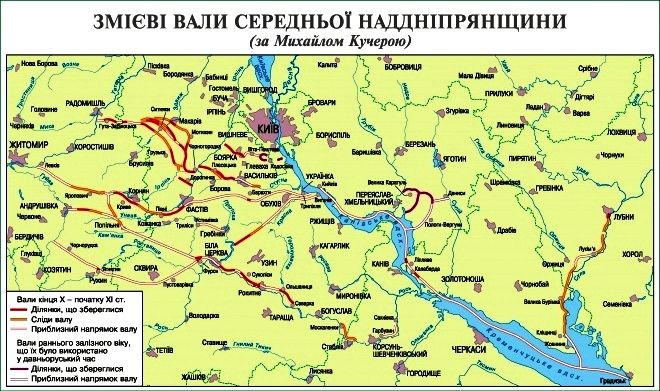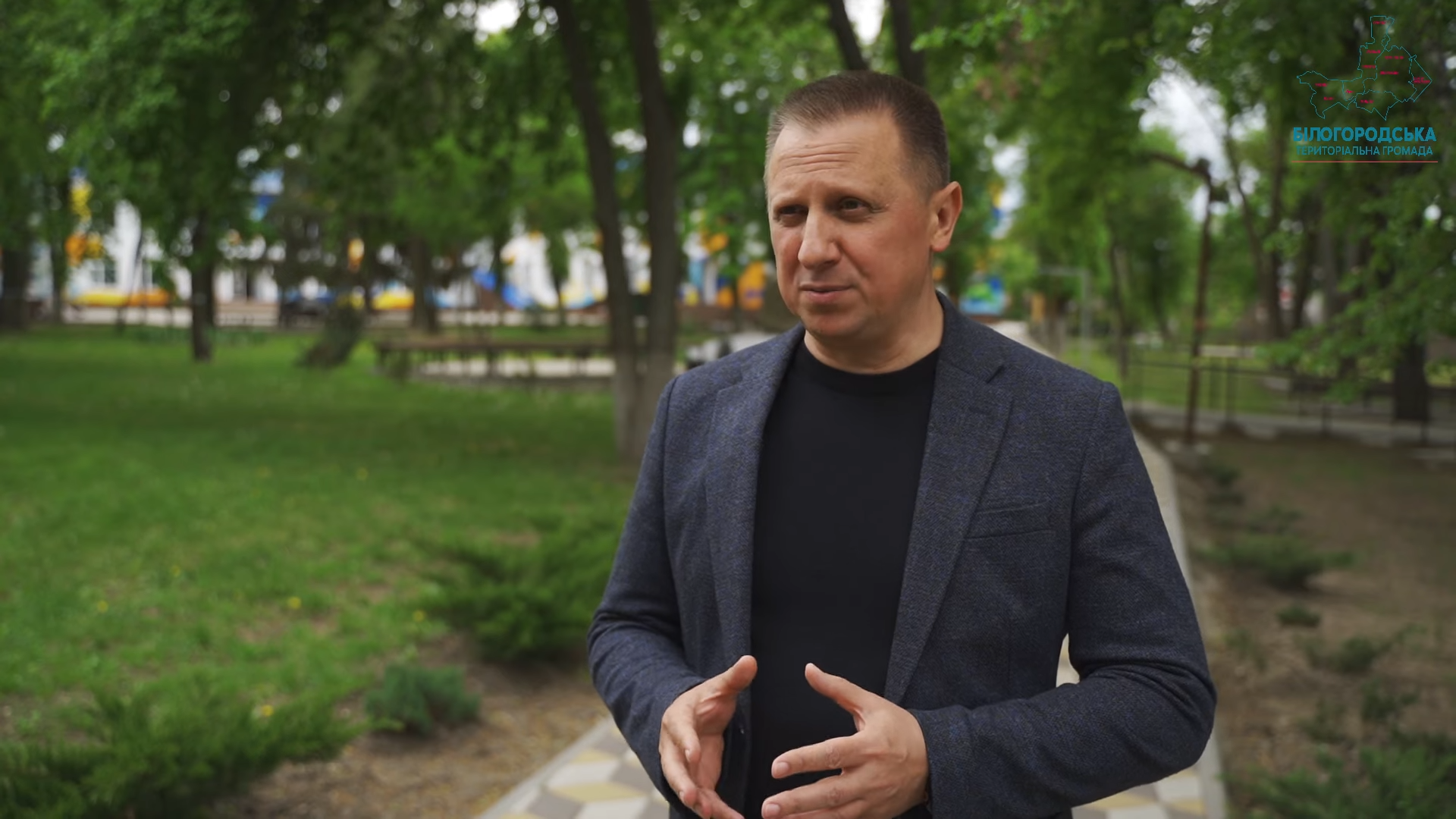In the territory of Ukraine lies a mysterious ancient monument – the Serpent Mounds. This vast complex of earthen structures has a total length of about 950 km (according to other sources, up to 2000 km). They are united into nine defensive lines. Significantly destroyed over many centuries due to economic activities, they nevertheless still impress with the scale of earthworks that have no analogs in the world and hold many secrets.
The Serpent Mounds of the right bank of Kyiv region are the largest system of fortifications. Near Bilohorodka lies its part known as the Vityansko-Bobrynska line of mounds. These mounds still reach 15 meters in height and represent substantial constructions – earthen embankments, at the base of which are logs made of thick wooden beams that serve as a supporting framework along the entire length of these structures. Clearly, there were also defensive wooden walls on the mounds, and the entire construction at the time of its erection resembled a fragment of the defensive mound of Kyiv, reconstructed during the restoration of the Golden Gates in the 1980s. In front of the mounds was a ditch several meters deep, from which, evidently, earth was taken for construction.
Questions Without Answers
During excavations near the mounds, fragments of pottery and even an axe from the princely era were found. However, despite these findings, and some similarity of the structure to known fortifications from the times of Rus, there are certain circumstances that indicate that the Serpent Mounds may be significantly older:
- Why are these mounds mentioned in chronicles only in the context of events occurring nearby, with no mention of who and when built them? After all, work of such colossal scale could not have escaped the attention of chroniclers. This means that the mounds already existed during the princely era.
- Everything we know about fortifications from the times of Rus pertains to the fortifications of individual settlements and hillforts. The scale of work compared to the Serpent Mounds is simply incomparable. The Serpent Mounds are enormous. They stretch for tens of kilometers, often parallel to each other, forming a whole labyrinth over a large territory – it is unlikely that such massive construction was within the capabilities of the ancient Rus.
- Radiocarbon analysis of the remains of the wooden framework, conducted in the early 1970s at the initiative of the well-known researcher of the mounds, A.S. Buhai, showed a dating of the 2nd to 7th centuries AD. This dating may indicate the Gothic period when a large and powerful early feudal state of the Goths existed in the Dnipro region, which they called Oium (in Gothic – the land of rivers, or water). Or it may refer to the proto-Slavic union of the Antae (Penkivska culture) – although we know nothing about such large-scale construction at that time.
- Some researchers believe that the construction of the mounds began with the Scythians in antiquity, but there is no reliable evidence for this – although the system of mounds partially uses ancient mounds from the Scythian period.
Legends, Guesses, Facts
According to legends, there was once a terrible serpent that troubled people until the strongman Mykyta Kozhumyaka (in another version – Saints Cosmas and Damian) defeated the serpent and harnessed it to plow huge furrows, and the earth from the plowshare formed those mounds. Perhaps in this legend lies an echo of some real danger from the steppe.
Researchers agree that the labyrinth of ancient mounds represented a certain obstacle to the invasions of nomads heading towards Kyiv. However, the very fact of the existence of such a colossal fortification structure that protected Kyiv in ancient times may indicate the following:
- At that time, on the territory of modern Ukraine, there already existed a powerful state formation capable of planning, organizing, and executing such large-scale works;
- Kyiv at that time was already a large and very important city, probably the capital of this formation – and it was specifically for the protection of this capital that such a vast system of fortifications was built.
These conclusions do not fit into the established system of our knowledge about the pre-chronicled past of Ukraine – and this is not surprising, especially considering that our history was primarily written by those interested in concealing the truth, distorting or omitting facts, and downplaying the significance of Ukraine's cultural and historical heritage. But facts, as we know, are stubborn things. For example, the fact that when Vikentiy Khvoyka began (as we now understand, very fragmentary) archaeological studies of Kyiv in the late 19th century, the number of Roman coins found in the city was simply incredible. By the time of late antiquity, it was already a large city.
Thus, Kyiv was not founded in 482 AD (a date that is not supported by any evidence, invented during the late USSR for the celebration of the "1500th anniversary of Kyiv"), but much earlier. It was indeed a magnificent and very important city, the center of a powerful state, for the reliable defense of which the Serpent Mounds were constructed.
A Museum for the Serpent Mounds is Needed
Perhaps it is time to think about serious research of the Serpent Mounds in the context of systematic study of the pre-chronicled history of Ukraine-Rus – using modern methods and interdisciplinary approaches. And about the creation of a museum where a full-profile cross-section of a fragment of the mound would be demonstrated, the structure, materials, and constructions described, the results of dating presented, etc. This needs to be shown to Ukrainians, who unfortunately know little about the history of their own people, and to foreigners, who know even less.
Where should such a museum be located? Obviously, near Kyiv, in an area with convenient transport accessibility. It would be quite logical in the Bilohorod community.




